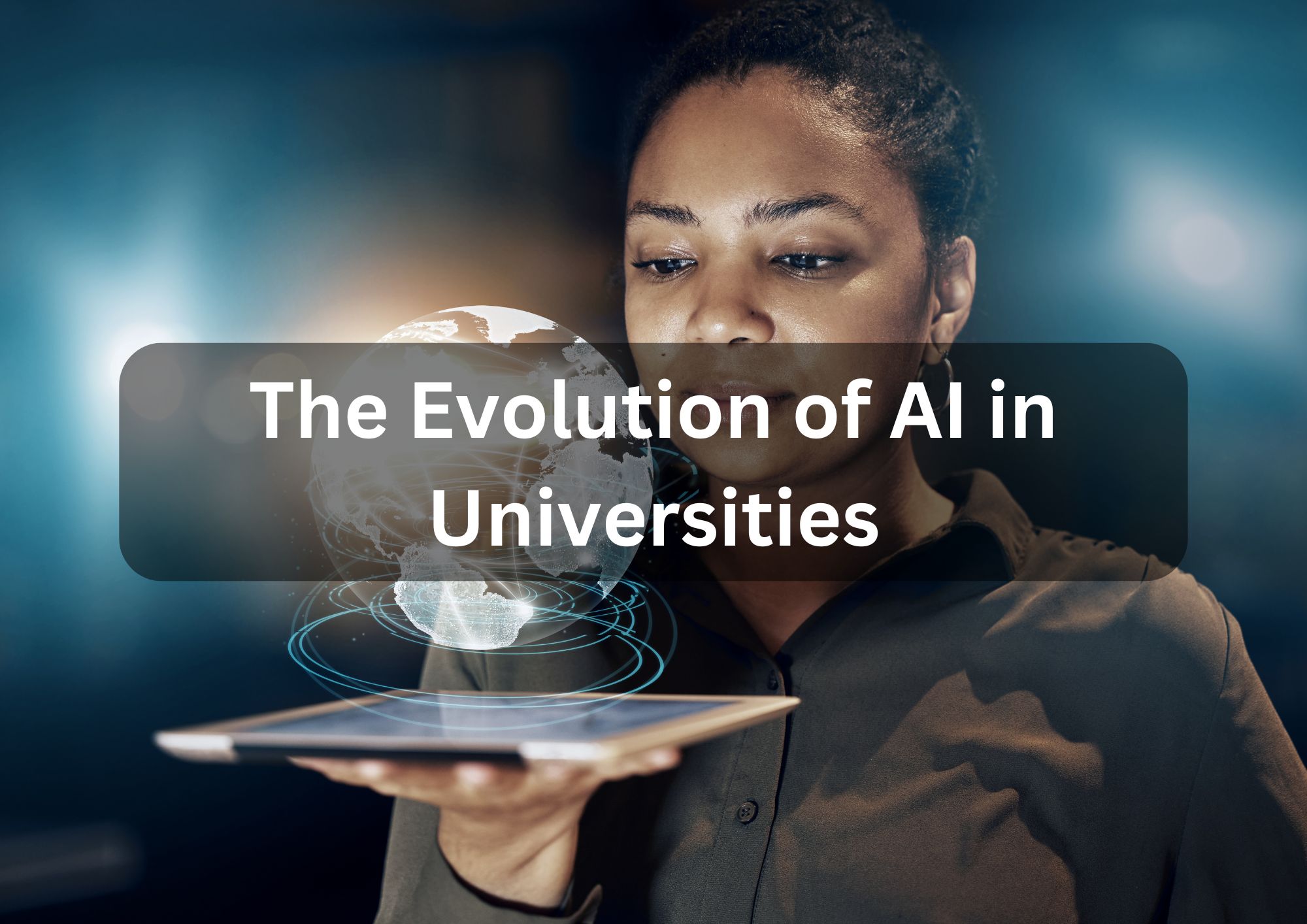Artificial intelligence (AI) has become really powerful. Remember when a computer named Deep Blue beat a chess champion? Now, AI is everywhere. It’s beating humans at games like Go and poker, helping us search online, giving medical advice, and even deciding if we can get a loan from the bank.
Some really smart people at universities came up with cool AI ideas and started businesses like DeepMind, Magic Pony, Aysadi, Wolfram Alpha, and Improbable.
Now, universities need to change because of AI. If they don’t, they might become less important.
Universities have already done amazing things, like finding new stuff. How they deal with AI will change education, science, and society.
Three scientists started DeepMind, and one of them, Demis Hassabis, studied at University College London (UCL). He thinks AI can help scientists discover new things.
The International Classroom for Students
Using cool technology like mixed reality and computer vision, we can make learning more fun and easier to understand. Games and simulations powered by technology can help students learn better and get more interested in their studies.
These tools also let students join in university research. They can help create new knowledge alongside professors. Projects like Galaxy Zoo let people from all over the world help scientists make discoveries.
AI can make education easier to get and make sure everyone learns more. Before, there were limits because of how many students a classroom could fit. But now, with things like Massive Open Online Courses (MOOCs), lots of people can take university classes online.
Schiller International University and AI Integration:
At Schiller International University, our aim is to give our students a top-notch education that prepares them for today’s job market. We know how important artificial intelligence (AI) is in education, so we adapt to these changes to make learning better.
We offer courses like Computer Science, MBA with a Data Science Certificate, and more. These courses give students the newest and most useful knowledge and skills. We also use AI tools in our teaching to make sure students are engaged, get feedback quickly, and learn in a way that fits them best.
We believe AI can make learning better and help students get ready for the future. We’re committed to staying up-to-date with technology and giving our students the tools they need to succeed in a world that’s always changing.
Join us on this special educational journey powered by AI and see how Schiller International University is changing traditional learning to help our students shine.
AI is Present Throughout Everything:

Nowadays, we can collect a ton of data, thanks to technology. It’s so much that it would be hard for just a few people to look at it all. Artificial intelligence is really helpful in some industries like tech, banking, marketing, and entertainment.
We’ve noticed that even if algorithms don’t improve, AI can still learn a lot when given a lot of data and powerful machines. Moore’s Law, which says technology gets faster over time, might be slowing down. But the amount of data we gather keeps growing fast. Scientists think new discoveries in computer science, math, or how the brain works could help us keep pushing technology forward, even if Moore’s Law slows down.
AI’s Potential to Shape Education’s Future:
As AI gets more involved in schools, especially with automatic grading, learning is changing. It’s bringing lots of benefits like more chances to learn, quicker grading, fairness, and feedback tailored to each student. But using these systems well means thinking about teaching methods, ethics, and how the technology works.
Even though AI can grade fast and give feedback, teachers are still important. They give emotional support, help students understand the context, and guide them in ways that technology can’t.
With AI as a teammate, teachers and students can create a new way of learning that helps students succeed in today’s world. So, when you get quick test scores and helpful advice, remember that AI is helping make education better.
Artificial Intelligence Applications in Education:
In education, people are looking at how much help artificial intelligence (AI) can give in teaching and learning. So far, most of the attention has been on AI helpers like chatbots, ways to change teaching to fit each student’s needs, and software that uses AI to help students learn better. That’s what this edition mainly talked about.
When it comes to technology, AI is used with big data, statistics, and machine learning. In teaching, AI helps with things like picking students, figuring out why some students leave school, and understanding how groups of students behave. It looks at all this data to guess what might happen in the future and how to help students better.
Even though there are many research papers about this, most of them are written by computer scientists who use data from real schools. But these ideas haven’t been used much in schools yet.
Learning Analytics: Using AI for Strategic or Institutional Reasons.
In technology, AI is used for handling big data, statistics, and machine learning. In teaching, most of these applications focus on issues like picking students, understanding why some students leave school, and how groups of students behave. They use the data to guess what might happen next and how to help students better.
There are many research articles about this, mostly written by computer scientists who use data from real schools. But these ideas haven’t been used much in schools yet.
In the future, if universities start collecting more data and using it better, this field will become more important in higher education. But this version doesn’t focus on that.
A roller coaster of successes and losses:
Between 1957 and 1974, AI started to grow. Computers got faster, cheaper, and easier to use. They could also store more data. People also got better at making algorithms for machines to learn from.
Early programs, like the General Problem Solver and ELIZA, showed promise in understanding language and solving problems.
Government organizations like DARPA started funding AI research at universities because of these successes. They were interested in things like processing big amounts of data and making machines understand spoken language.
Some experts thought we’d have machines as smart as humans in just a few years. But even though there were some early successes, there was still a lot of work to do before machines could understand language, think abstractly, and recognize themselves.
Conclusion:
Artificial intelligence (AI) has changed how universities work. They’re using AI, like DeepMind and Schiller International University, to make teaching better, tailor learning for each student, and connect with students worldwide. Even though people used to be really hopeful about AI, there have been good things and bad things along the way. But as AI becomes more common, using it in education brings new chances to try new things. Universities need to use AI to stay important, making learning more exciting and getting students ready for what’s coming next.
FAQs About The Evolution of AI in Universities:
Q: How is artificial intelligence (AI) revolutionizing education?
A: AI is revolutionizing education by enabling personalized learning experiences, enhancing student engagement through immersive technologies, and providing instant feedback for improved academic performance.
Q: What role do universities play in the development of AI?
A: Universities serve as hubs for AI research and innovation, fostering collaborations between academia and industry. They contribute to the advancement of AI through groundbreaking discoveries, training future AI professionals, and shaping ethical guidelines for its implementation.
Q: How does AI impact the future of work?
A: AI is reshaping the future of work by automating routine tasks, augmenting human capabilities, and creating new job opportunities in AI-related fields such as data science, machine learning, and robotics.
